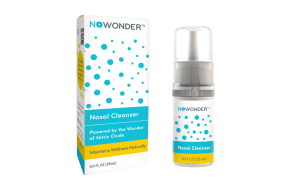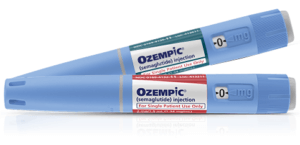The incidence of fungal infections is increasing worldwide. What’s making it worse is that more are becoming resistant to the war chest of antifungal medications that has been built up over the years to fight off this particular blight. In this article, we hope to help explain how best to recognize the enemy, how to build up defenses, and finally how to treat fungal infections if they do breach the walls.
A common question is what kills fungus quickly and safely. The honest answer is that it depends on where the fungus is growing, how strong a person’s immune system is, and which species is causing trouble. Some infections are simple and clear on their own with short treatment, while others affect the lungs or bloodstream and need hospital care and specialist medicines. Knowing the basics helps people understand why some fungal problems clear up in days and others take months.
A short walk into the forest of fungi
- Fungi are a distinct kingdom of life, separate from plants and animals, including yeasts, molds, and mushrooms, that are neither plants nor animals.
- They cannot produce their own food through photosynthesis; instead, they get nutrients by decomposing dead matter or feeding on hosts. They secrete enzymes to break down organic matter and then absorb it.
- They are found everywhere, including soil, water, air, and living on and in plants and animals.
- Most fungi reproduce through spores, which are released and spread by wind, water, or other means.
In terms of human interactions, fungi can invade the skin, nails, or mucous membranes, so treatments must reach those layers to work.
Doctors and scientists use several main groups of antifungal medicines to control these organisms. Some are used on the surface of the skin, while others move through the bloodstream to reach deeper organs. Many common fungal skin infections are mild and only affect the top layers of the skin or nails, but others can reach the lungs, brain, or blood and cause serious illness, especially in people with weak immune systems.
Understanding fungal infections
A fungus is a living organism. It can live harmlessly on the body, or it can cause infection when conditions are right. Everyday examples include athlete’s foot, nail fungus, ringworm, oral thrush, and jock itch. Vaginal yeast infections are also caused by yeast that normally live in the body but grow out of control.
Most of these problems are limited to the skin, mouth, or genital area and can be managed with creams, powders, or short courses of medicine. However, internal fungal infections that reach the lungs or bloodstream are more serious. These lung infections can happen when a person breathes in fungal spores from soil, bird droppings, or dust, or when yeast in the body moves into the blood in very sick patients in hospital.
Some fungi, like Candida auris or molds that cause aspergillosis or mucormycosis, are a bigger threat for people in intensive care units or those living with conditions like HIV/AIDS. These infections often need strong hospital-based care and careful follow-up. This is where more powerful antifungal medications are used under strict monitoring.
How antifungal treatments work
To treat fungal infections effectively, medicine has to damage key parts of the fungal cell without harming human cells too much. Many drugs focus on the outer layers of the cell, such as the fungal cell membrane, while others target the inner machinery that the fungus needs to grow and divide. Pharmacists sometimes talk about the fungal cell wall – which is the tough outer wall that helps the fungus hold its shape and survive.
There are several main types of antifungal treatment:
- Azole antifungals (such as fluconazole or clotrimazole) interfere with building blocks of the cell membrane so the fungus becomes leaky and weak.
- Allylamines (such as terbinafine) block enzymes that the fungus uses to make important fats, slowing growth and leading to death of the cell.
- Polyenes (such as nystatin) bind to the membrane and create holes, which is why they are often used for mouth and vaginal yeast infections.
These antifungal drugs can be given in many forms. Creams, sprays, and powders work well for many skin infections because they stay where the fungus lives. An oral antifungal is useful when the infection is widespread, deep in the nails, on the scalp, or inside the body. In serious cases, medicine may be given intravenously in hospital so it can reach the brain, lungs, or other organs quickly.
Why speed matters – killing fungus the fastest way
Everyone wants fast results, especially when an infection burns, itches, or looks worrying. The reality is that speed depends strongly on the type of infection. A mild case on the skin often settles quickly once the right cream is used and the skin is kept clean and dry. Deep nail or organ infections, on the other hand, take much longer because the infected tissue grows or heals slowly.
For common fungal skin infections like athlete’s foot or ringworm, topical medicines containing terbinafine or clotrimazole can calm itching in a few days. The rash may fade more slowly, so it is important to continue treatment for the full course.
Nail fungus often needs months of steady therapy because the new nail has to grow through without infection. Thrush in the mouth or genital area usually improves within days when treated with the right medicine, but again, stopping too early can lead to relapse.
Fast relief vs. complete cure
Topical treatments often bring quick relief. Creams and sprays can cool inflamed skin and reduce redness and itch within a short time, which feels like a big win. However, killing every last fungal cell is slower. The fungus can hide in tiny skin folds, under nails, or deeper in hair follicles.
A complete cure usually needs weeks, sometimes months, of steady treatment. This is why instructions on the label matter: many products say to continue use for a set period even after symptoms fade. Stopping early lets the fungus grow back from the few surviving cells. This pattern explains why some people feel trapped in a cycle of repeat infections.
Natural and home remedies: what works and what doesn’t
Many people are curious about household products and natural remedies. Vinegar, hydrogen peroxide, menthol rubs, and essential oils are often mentioned. These may reduce odour, soften thickened skin, or give a cooling sensation. Some plant oils do show mild antifungal effects in laboratory tests.
Apple cider vinegar and tea tree oil are often promoted as cures. In practice, they may help some people feel more comfortable, but they do not reliably clear deeper infection on their own. Strong oils can also irritate the skin or cause allergic reactions if used undiluted. For those reasons, such remedies should be used cautiously and not as a replacement for proven medical treatment, especially when the infection is spreading or affects someone with a weak immune system.
Oral antifungal medications: when it needs a stronger option
Sometimes creams and powders are not enough. Oral medicines are used for nail, scalp, lung, or widespread infections, and for people whose immune systems need extra help. In these situations, a doctor may choose from several well-known medicines, based on the site and type of infection and the person’s other health conditions.
Common options for treatment of fungal infections include:
-
- fluconazole (Diflucan) – treats Cryptococcal meningitis, coccidioidomycosis, oral and genital thrush, skin fungal infections
- itraconazole (Itraconazole) – treats yeast, dermatomycoses, vulvovaginal and oral candidosis
- terbinafine (Lamisil) – treats fungal infections of the fingernails and toenails.
- ketoconazole (Nizoral) – used to treat fungal skin infections such as athlete’s foot, ringworm, jock itch, and certain types of seborrheic dermatitis.
For very serious infections, doctors may use blood tests to check levels of these medicines in the body. This is called therapeutic drug monitoring and helps make sure the dose is high enough to work but not so high that it causes avoidable side effects.
For patients prescribed antifungal medications such as fluconazole or itraconazole, IsraelPharm helps provide safe, affordable access to both trusted brands and generics.
Stopping fungal infections from returning with proper lifestyle
Medicines do a lot of the heavy lifting, but daily habits matter too. Fungi love warm, damp, enclosed places. Simple choices can make the body less inviting. Keeping skin folds clean and dry, changing socks often, and choosing breathable fabrics such as cotton can all help. Sandals or well-ventilated shoes reduce moisture around the feet, which is important for problems like athlete’s foot.
It also helps to avoid sharing towels, hairbrushes, or footwear. In busy public places such as gym showers or pool changing rooms, wearing flip-flops or shower shoes reduces the chance of contact with spores. Antifungal powders or sprays in shoes or on feet can give added protection in humid environments or for people whose feet sweat a lot.
Why do fungal infections keep coming back?
Recurring infections are frustrating. Often they reflect the environment or a health condition rather than a personal failing. Moist environments, such as damp shoes, tight clothing, or warm skin folds, give fungi a comfortable home. A weak immune system from illness, age, or medicines like steroids also makes it harder for the body to clear fungus fully.
Another common reason is not completing treatment. When symptoms improve, it is tempting to stop, but leftover fungus can quietly regrow. Re-exposure is also common: a person may clear athlete’s foot from the skin but not treat shoes or socks, so the fungus returns. Working slowly through each of these factors is often the key to long-term control.
When to see a doctor if there are signs of fungal infection
Many mild problems can be handled with short courses of over-the-counter products, especially small patches on the skin. But there are times when medical review is very important. Warning signs include rapid spread of a rash, increasing pain or swelling, fever, trouble breathing, or symptoms that keep coming back despite careful treatment.
People with diabetes, cancer, HIV, or other conditions that weaken the immune system should be cautious about any possible fungal infection. So should those who have recently had surgery or who carry medical devices such as central lines. In these situations, a healthcare provider can decide whether prescription treatment, testing, or referral to a specialist is needed. Any decision about medicine choice or duration should be made together with a qualified healthcare provider.
Key takeaway: consistency, not speed, can cure fungal infections
It is natural to want a quick fix, but fungi are stubborn, slow-growing organisms. Some treatments act quickly on symptoms, but “instant” results are rare, and speed always depends on the site and type of infection. A realistic goal is steady improvement, not overnight cure. Clear expectations help families stay patient through the full course of treatment and focus on long-term health rather than quick wins.
Fungal infections can be frustrating, but with proper treatment, they’re completely manageable. Even though there’s no “instant kill” for fungus, effective antifungal medications can start working within days when used correctly.
IsraelPharm provides access to doctor-prescribed antifungal medications safely and affordably. Remember – effective treatment doesn’t have to come at a high cost.
Frequently asked questions about fungal infections
How can a person tell if a rash is caused by fungus?
Fungal rashes often have a few common features. They may be red, flaky, or scaly at the edges with more normal skin in the centre, as in ringworm. The area often feels itchy or mildly burning rather than sharply painful. In moist areas, such as skin folds or between the toes, the skin can look soft, pale, or cracked. However, some bacterial and allergic rashes can look similar. Because of this, a healthcare provider may need to examine the area, and sometimes take a small skin sample, before choosing the best way to treat fungal infections.
What kills fungus on the skin the fastest?
On the skin, creams or sprays that contain terbinafine or clotrimazole usually act quickly. They work by blocking growth or damaging the outer layers of the fungus so it cannot survive. Cooling, drying the area, and wearing loose clothing also help symptoms settle. Even when relief comes in a few days, the fungus itself can take longer to clear, so treatment often continues for one to four weeks. Deeper problems such as nail disease or infections in hair follicles need longer. A healthcare provider can advise which product and duration best match a particular case.
Are natural remedies enough to treat fungal skin infections?
Natural products like tea tree oil, garlic, or apple cider vinegar are popular, and some show mild antifungal activity in the lab. They might reduce odour or irritation and can make skin feel fresher. Still, they are not as reliable as tested medical treatments, especially when the infection is large, has been present for a long time, or affects someone with other health problems. Strong oils can also irritate the skin. Because of this, most experts see natural remedies as a possible add-on, not a replacement, for proven antifungal drugs. A healthcare provider can help decide when medical treatment is needed.
Why do nail fungal infections take so long to clear?
Nails grow slowly, and fungus hides deep under the nail plate and in the nail bed. Creams have trouble reaching those spaces, which is why nail disease often needs long courses of oral antifungal treatment or special lacquers. As healthy nail grows out from the base, the damaged part is slowly trimmed away. This process can take many months for toenails. If treatment stops too soon, leftover fungus can spread into the new growth. Keeping nails trimmed, dry, and protected in clean socks and shoes supports the medicine’s work.
Can fungal infections affect the lungs or other organs?
Yes. Some environmental fungi live in soil or bird and bat droppings. When spores from these sources are breathed in, they can cause lung disease, especially in people with weak immune systems. Others, like Pneumocystis or certain molds, mainly trouble those with HIV/AIDS, cancer, or organ transplants. In hospitals, yeasts such as Candida can enter the bloodstream through medical lines. These deep infections are serious and need prompt treatment with strong antifungal medicines, sometimes in intensive care. Anyone with lasting cough, fever, or chest pain after visiting high-risk areas should seek medical care.
What role does resistance play in fungal infections?
Antifungal resistance happens when fungi change in ways that let them survive medicine that used to work against them. This is becoming more common with some species, like Candida auris and certain Aspergillus strains. Resistance makes infections harder to treat and increases the need for careful drug choice and dosing. In serious cases, laboratory testing can show which medicines still work for a particular fungus. To slow resistance, it is important that people take antifungal medicines only when needed and follow the full course as agreed with a healthcare provider, rather than stopping early.















